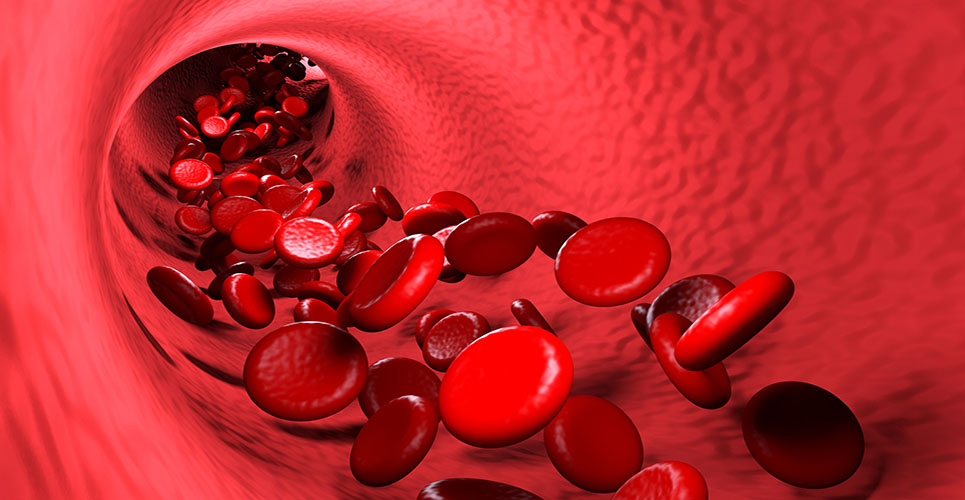teaser
Janice L Stumpf
PharmD
Clinical Pharmacist
Drug Information Service
Clinical Associate Professor
University of Michigan Health System/College of Pharmacy
Ann Arbor
Michigan
USA
The body is quite efficient at conserving iron, with little capacity for excretion.[1,2] Iron overload (haemosiderosis) can be seen after transfusion of 10–20 units of packed red blood cells. The excess iron forms insoluble deposits (haemosiderins) in the liver, heart and endocrine glands, damaging these systems. Most of the mortality attributed to iron overload is due to cardiac failure, but hepatotoxicity, diabetes and hypogonadism may also occur.
Chelation therapy
Iron chelation is a key component in managing transfusion-dependent anaemias and can limit iron-induced organ damage and prevent premature deaths.[3,4] Chelation therapy is recommended when the serum ferritin concentration consistently exceeds 1,000 mcg/l or following transfusion of approximately 20 units of packed red blood cells.[5] Until recently, iron overload has primarily been managed with 8–12-hour continuous subcutaneous infusions of deferoxamine (Desferal®, Novartis) five to seven times weekly. Yet, up to half of patients are noncompliant with deferoxamine therapy, likely due to the demanding parenteral regimen.[6–8] Use of another oral iron chelator, deferiprone (Ferriprox®, Apotex), has been limited by concerns regarding adverse effects such as hepatic fibrosis, arthropathy and agranulocytosis, as well as less serious gastrointestinal disturbances.[9]
Deferasirox
Deferasirox (Exjade®, Novartis), a once-daily orally active iron chelator, was approved in the EU in 2006 for treating chronic iron overload due to blood transfusions in selected patients as young as two years of age.[10] Deferasirox is a tridentate chelator that binds ferric iron in a dose-dependent manner, allowing its faecal excretion.
Deferasirox has been studied in patients with iron overload associated with beta-58.9% of deferoxamine recipients. Studies of the effects of deferasirox on myocardial iron stores and on clinical outcomes associated with iron overload are not yet available.
Adverse effects of deferasirox
The most frequently reported adverse events in 1,075 patients enrolled in clinical trials were dose-related abdominal pain, nausea, vomiting, diarrhoea and skin rashes.[10] Other side-effects include headache, fever, cough and increased serum transaminase and creatinine concentrations. Elevations in serum transaminase levels in excess of five times the upper limit of normal were documented in 25 patients (8.4%), with two patients discontinuing therapy due to biopsy-proven drug-induced hepatitis.[10,11] Liver function tests should be monitored during deferasirox therapy and dose modifications considered for severe or persistent elevations.
Dose-dependent increases in serum creatinine concentrations of > 33% above baseline were observed on two separate occasions in 113 (38%) deferasirox recipients, necessitating dose reduction in 25 patients.[10,11] In addition, cases of acute renal failure, some fatal, have been reported postmarketing.[18] Most of the deaths occurred in patients with multiple underlying medical conditions, whose haematological disorders were in advanced stages. Serum creatinine concentrations should be determined prior to deferasirox initiation and then monthly. More frequent – weekly – serum creatinine measurements are recommended for the first month of therapy in elderly patients, those with pre-existing renal or other co-morbidities, and those receiving potentially nephrotoxic agents. Intermittent proteinuria was also noted more often in deferasirox- than in deferoxamine-treated patients (18.6% vs 7.2%) and should be monitored monthly.[10,11]
Hearing loss and ocular disturbances have been associated with deferasirox therapy, so auditory and ophthalmic testing is recommended pretreatment and annually thereafter.[10,11] Blood dyscrasias, including agranulocytosis, neutropenia and
thrombocytopenia, have been described in postmarketing surveillance.[18] Although a definite link to deferasirox therapy has not been established, blood counts should be checked regularly and the drug discontinued if cytopenia develops. Leukocytoclastic vasculitis, urticaria, anaphylaxis and angio-oedema have also been reported postmarketing.
Dosage and administration
Deferasirox is available in 125 mg, 250 mg and 500 mg dispersible tablets.[10] Therapy should be initiated with 20 mg/kg body weight per day rounded to the nearest whole tablet, although higher or lower starting doses may be considered, depending on baseline iron stores and transfusion regimen. Deferasirox should be taken once daily on an empty stomach, at least 30 minutes before food. The tablets are not to be swallowed whole or chewed. Instead, a suspension is made by stirring the tablets into 100–200 ml water or orange or apple juice. Doses may be adjusted by 5 or 10 mg/kg every three to six months according to serum ferritin levels, but should not exceed 30 mg/kg/day.
Conclusion
Deferasirox represents an alternative for patients with transfusion-related iron overload who are unable to tolerate or comply with deferoxamine therapy. At recommended doses, deferasirox reduces liver iron and serum ferritin concentrations in both adult and paediatric patients with iron overload associated with treatment of several haematological disorders.
Although the effects of long-term deferasirox on the clinical consequences of iron overload are currently unknown, easing the administration of chelation therapy with a once-daily oral formulation may improve outcomes by enhancing compliance.
References
1. Semin Hematol 2005;42(2Suppl1):S2-4.
2. Hematol Oncol Clin North Am 2005;19 Suppl1:7-12.
3. N Engl J Med 1994;331:567-73.
4. N Engl J Med 1994;331:574-8.
5. Cappellini N, et al, editors. Guidelines for the clinical management of thalassaemia. Nicosia, Cyprus: Thalassaemia International Federation; 2000: 21-35. Available at: www.thalassaemia.org.cy/archive.asp#Books
6. Lancet 2003;361:1597-1602.
7. Lancet 2000;355:2051-2.
8. Semin Hematol 2005;42(2Suppl1):S19-21.
9. Blood 2006;107:3436-41.
10. Novartis Europharm. Exjade® (deferasirox) dispersible tablets: summary of product characteristics. Horsham, UK: Novartis Europharm; 2006.
11. Blood 2006;107:3455-62.
12. Blood 2004;104:872a (abstract).
13. Leukemia Res 2005;29 Suppl1:S67 (abstract).
14. Blood 2005;106:757a (abstract).
15. Haematologica 2006;91:873-80.
16. Haematologica 2006;91:1343-51.
17. Br J Haematol 2006;136:501-8.
18. US FDA. Exjade (deferasirox) tablets for oral suspension. Medwatch Safety Information Alert. Rockville MD; FDA: 2007. Available online at: www.fda.gov/medwatch/safety/2007/safety07.htm#Exjade
Resources
American Society of Hematology
W: www.hematology.org
Myelodysplastic Syndromes Foundation
W: www.mds-foundation.org
Aplastic Anemia & MDS International Foundation
W: www.aamds.org/aplastic
Thalassaemia International Federation
W: www.thalassaemia.org.cy

